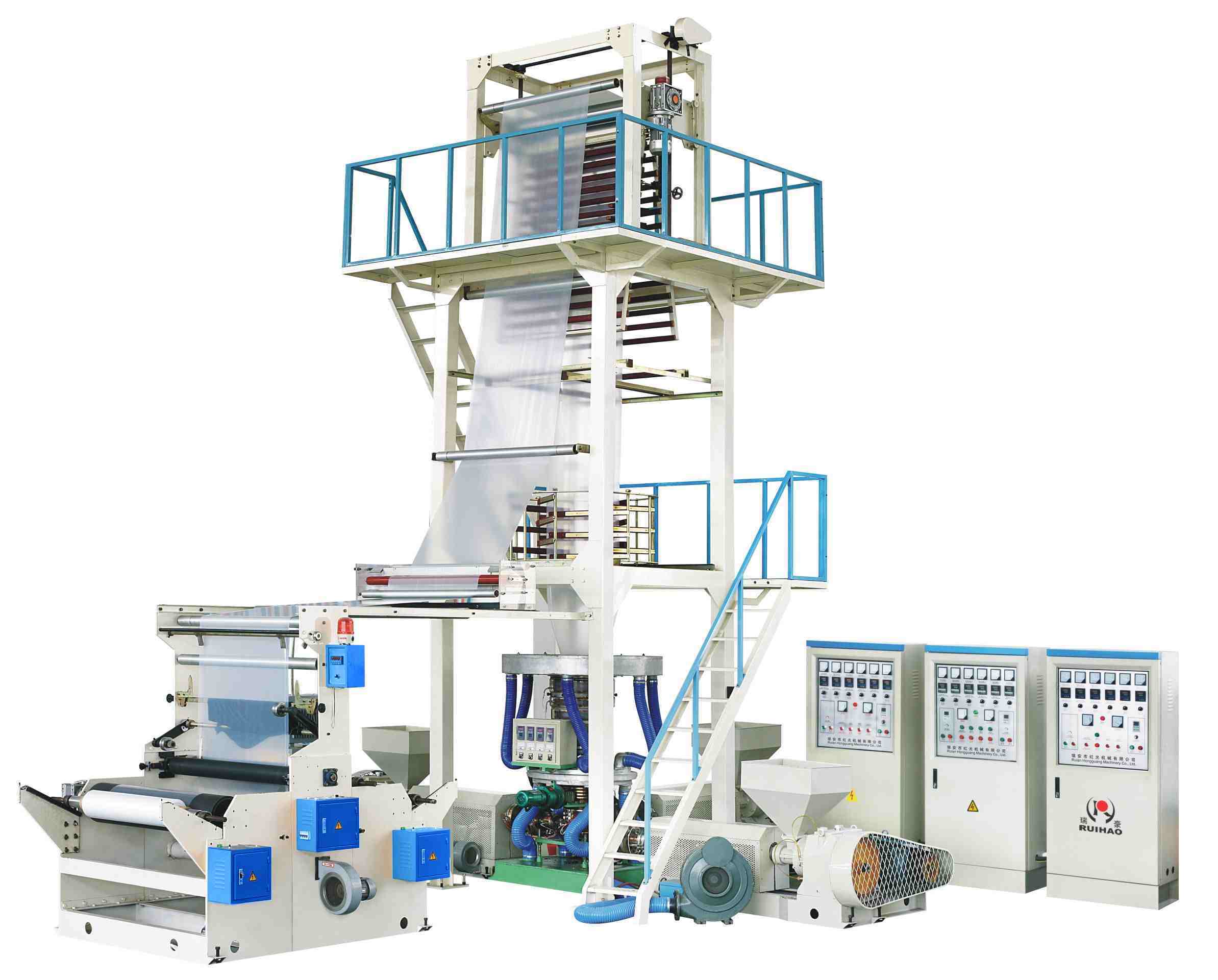
|
Ningbo Jinyi Precision Machinery Co., Ltd.
|
Gold Index: 25514
You are here: home > Study Room > Blowing Film Products Trouble Shooting
Product (264)
-
Screw Barrel
(242)
- Single Screw Barrel (137)
- Injection Screw Barrel (29)
- Extrusion Screw Barrel (13)
- Bimetallic Screw Barrel (13)
- Twin Screw Barrel (18)
- Screw Barrel Accessory (21)
- Plastics Screw Barrel (8)
- Recycling Screw Barrel (2)
- Blowing Film Screw Barrel (1)
- Tie Bar (4)
- Reduction Gearbox (4)
- Auxiliary Machinery (14)
Trade Show (15)
Equipment (13)
Certificate (5)
Develop & Customers (1)
Study Room (17)
Credit Report
Products Index
Study Room
Blowing Film Products Trouble Shooting

1) Thickness Variations
Cause | Solution | ||
The die gap is uneven. | The die gap is uneven. Adjust it to be uniform. | ||
The cooling air supply is uneven. | Clean the air ring and inspect for mechanical flaws. | ||
The die lip is dirty or damaged. | Eliminate carbonized material and other foreign matter, and clean the die. | ||
There is a wide variation in melt temperature. | Take steps to ensure that kneading is uniform inside the extruder. | ||
Too much pressure exists between the nip roll. | Check to determine whether the nip roll is too old or damaged. Adjust the pressure between the roll. | ||
2) Declining (Poor) Tear Strength
Cause | Solution | ||
The blowup ration blow up ratio is not correct. | Adjust the blow up ratio. | ||
The frost line is inappropriate. | Adjust the frost line and the bubble conditions. | ||
The die is tainted. | Remove impurities from the die lip. | ||
Tear Strength : This is the force required to initiate tearing of the film. There are the Elmendorf and the Korean Standard tear strengths
3) Declining Impact Strength
Cause | Solution | ||
The blow up ratio and the frost line are not correct. | Adjust the blow up ratio and/or frost line. | ||
The melt condition is not proper. | Alter the operation conditions (extruder temperature, screen mesh, etc.) so that meting is uniform. | ||
4) Film Blocking Phenomenon
Cause | Solution | ||
The film is too hot When it reaches the nip roll. | Lower the temperature by increasing the volume of cooling air. Lower the frost line. Ensure that the nip roll pressure is not too high. | ||
Film treatment is excessive. | Make sure tension is not too great during film winding. Adjust the corona treatment. | ||
Problems exist with the film itself such as static electricity. | Eliminate the static electricity from the film. Treat with antiblocking agent (A and B) and slip agent. | ||
Film Blocking: The undesired adhesion between layers of plastic film in storage or use. This condition is prevented by applying an antiblocking agent
5) Poor Film Transparency
Cause | Solution | ||
The wrong temperature setting is made. | Raise the extruder temperature as high as possible without causing the resin to decompose. Raise the die and die lip temperature, minimizing roughness on the film surface. | ||
Crystal formation is too large. | Lower the height of the frost line. Increase the air volume. Increase the degree of extruder kneading. | ||
Using extruders with an internal bubble cooling system will enhance film transparency.
6) Printing Defects on Film.
Cause | Solution | ||
Corona treatment of the bubble is defective. | If the ink adhesiveness is not set according to circumference, check the corona treatment bar and roll. Ensure there are not problems with electrical discharge. Also check to ensure no changes in conductivity occur from carbonized material. Check for uniformity in the thickness of the dielectric coating from the corona treatment roll. Also inspect for damage in the coating from combustion. Check the gap between the electrode and the dielectric roll. | ||
7) Printing Problems
Cause | Solution | ||
Problems are experienced with the ink. | Ensure that the ink has dried completely. | ||
Is the corona treatment excessive? (when ink stains the opposite side) | Reduce the corona treatment. Check to ensure that no creases are made during corona treatment. | ||
Additives migrate to the surface. | Minimize the use of additives ( such as slip agent). | ||
8) Poor Thermal Bonding
Cause | Solution | ||
Corona treatment is excessive. | Reduce the strength of corona treatment. Adjust the position and gap of the corona treater. | ||
The film surface oxidizes from excessive heat during operation. | Check the operational temperature, and lower any settings that are too high. | ||
Additives migrate to the film surface. | Minimize the amounts of additives used. | ||
Thermal bonding is poor. | Use a different thermal bonding agent. | ||
The color master batch contains too much wax. | Minimize the wax content. | ||
Pre Page:
Injection Molding Trouble Shooting--04
Next Page:
Extrusion Instability



